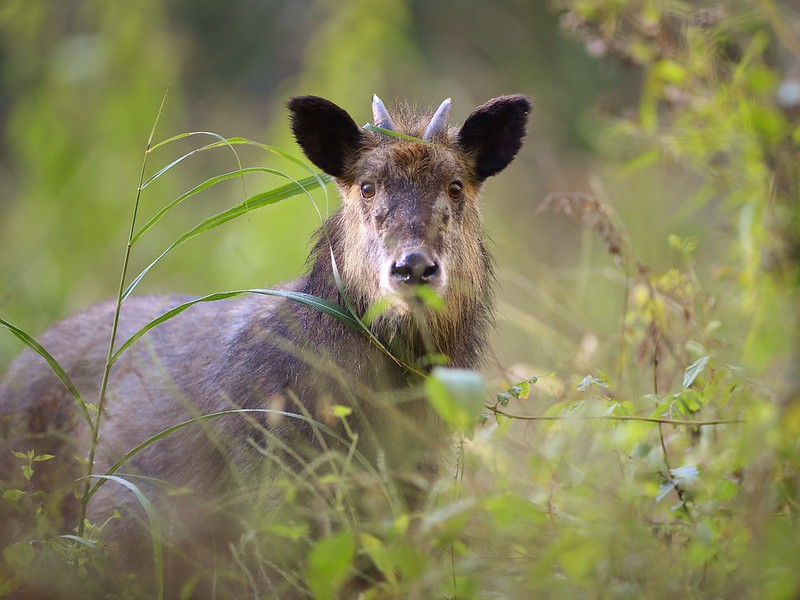
The Lithe Japanese Serow
Japan is a country rich with natural resources. It is composed mostly of dense forests and steep mountains. Since many Japanese live on coastal plains, this leaves vast expanses of unspoiled natural environment. Japan also has a varied geography, from its frigid northern shores to its balmy southernmost islands. It is no surprise that Japan has a rich and diverse indigenous wildlife: 130 different types of land mammals and more than 600 species of birds.
The Japanese serow (Capricornis crispus) is one of Japan’s very own indigenous mammals. It is also known in a variety of names such as wool deer, mountain sheep, cow demon, and dancing beast. Japanese serows are even-toed hoofed mammals and Japanese goat-antelopes (a medium-sized bovid) primarily found in dense mountain forests of northern and central Honshu. They are subject to protection in conservation areas.
The Japanese serow stands about 32 in. tall and weighs about 65 to 100 pounds. Its color can be anywhere between purplish black to white and it usually lightens during summer. Its fur is bushy and it has short horns, usually 18 to 15 cm. long, that curve backwards. The Japanese serow kid will reach full size and leave the mother’s territory at 12 months and become sexually mature by 3 years. Japanese serows are solitary creatures but sometimes like to gather as a pair or small family units. They are reputed for their speed and agility and are the national symbol of Japan.
Serows are considered the most primitive living Caprinae. Fossils of serows have been found from the late Pliocene, 2 million years ago. The oldest known Caprinae dates back to 35 million years ago and closely resembles a serow. The earliest records of the Japanese serow were gathered from prehistoric bones discovered by archeologists in mountainous regions from the Jōmon period. It is believed that the ancient Japanese hunted them for food and clothing, as is written in the Nihon Shoki (720 BCE). During the mid 20th century, the Japanese serow was hunted to near-extinction. In 1955, the Japanese government passed a law that made the Japanese serow a “Special National Monument” which automatically protected the species from poachers.
Japanese serow charms are popular among students as an amulet for good luck in passing an exam. The Yamaha Motor Company also marketed the XT 225 motorcycle as the Yamaha Serow.
Check out the video of a Japanese serow:
